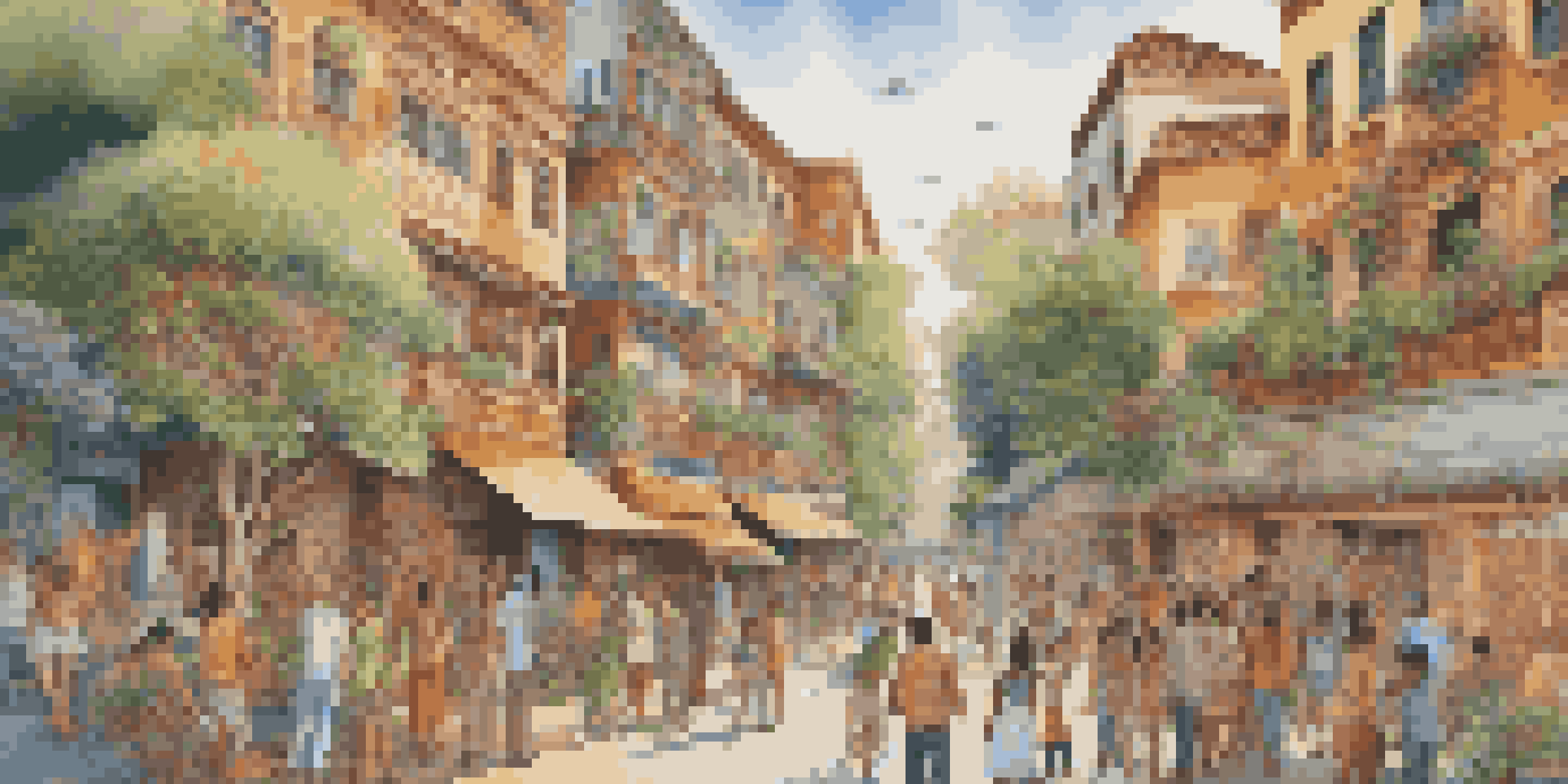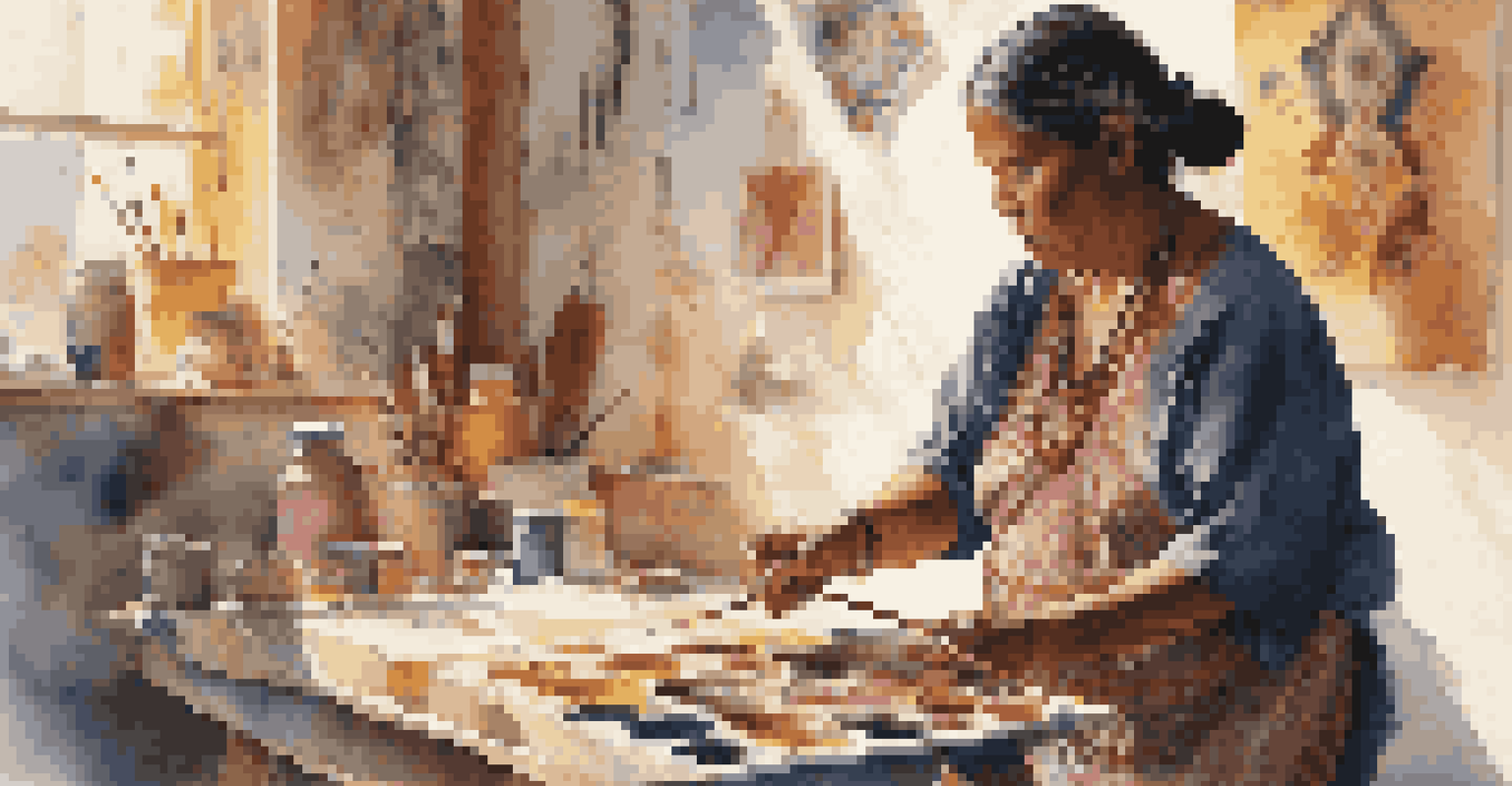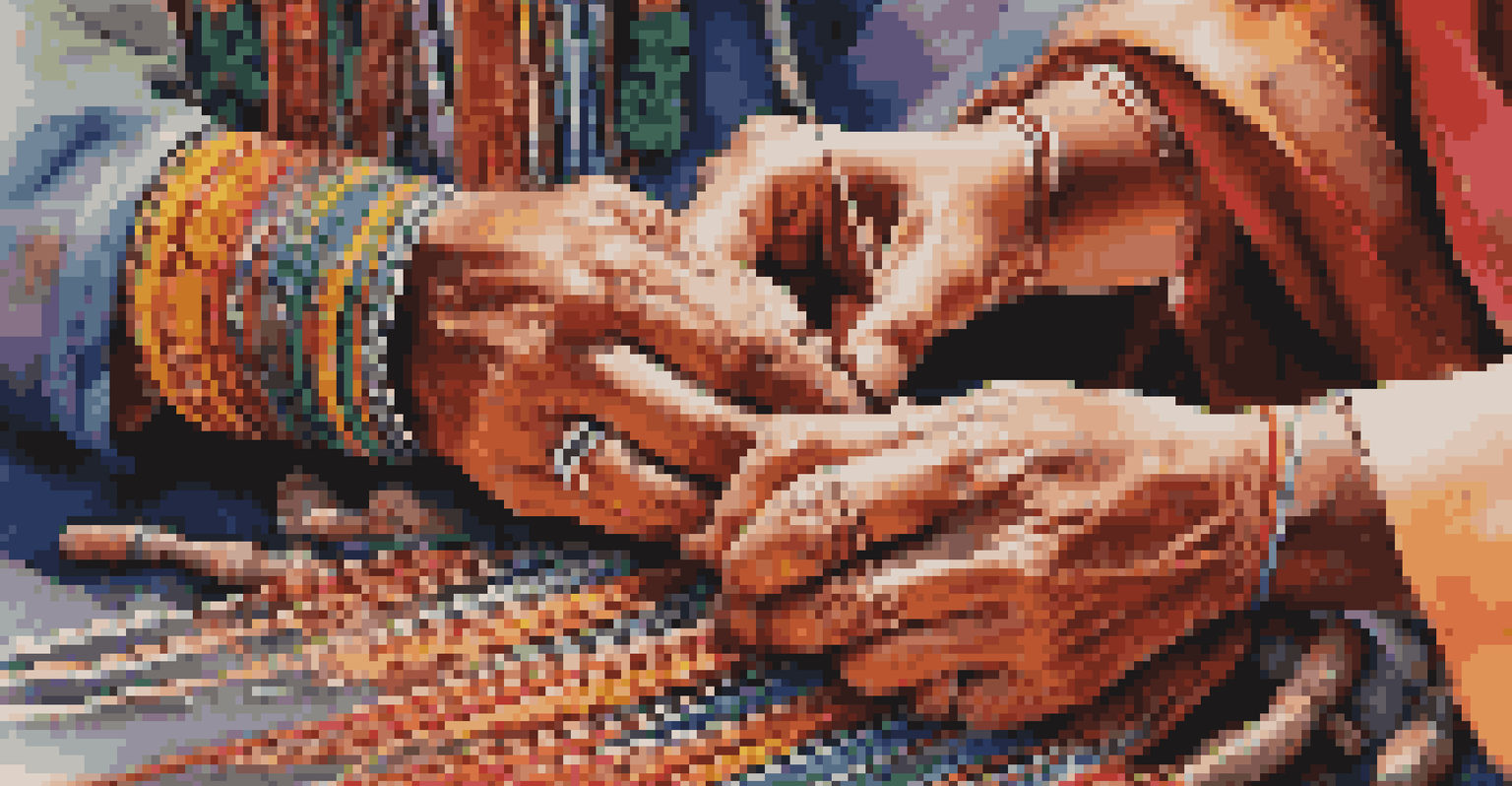Art and Authenticity: The Role of Cultural Narratives

Understanding Art's Connection to Cultural Narratives
Art is often a reflection of the culture from which it emerges. Each piece tells a story, rooted in the traditions, beliefs, and experiences of a community. These cultural narratives are the threads that weave authenticity into the fabric of art, guiding both its creation and interpretation.
Art is the most beautiful of all lies; it is a lie that reveals the truth.
For example, indigenous art often incorporates symbols and themes that are deeply tied to the history and spirituality of the community. When created within this context, the artwork holds a significance that transcends mere aesthetics, embodying the essence of its cultural roots.
Thus, understanding these narratives helps us appreciate the layers of meaning behind artworks. It enables us to see beyond personal interpretations and recognize the collective cultural heritage they represent.
The Importance of Authenticity in Art Creation
Authenticity in art speaks to the genuine expression of the artist's identity and influences. An authentic piece resonates not just as an object, but as a voice conveying personal and cultural truths. This is why many artists strive to stay true to their roots and cultural narratives in their work.

Take, for example, the rise of street art, which often reflects the socio-political context of its environment. Artists like Banksy use their platform to comment on societal issues, infusing their work with authenticity that resonates with viewers on multiple levels.
Art Reflects Cultural Narratives
Art serves as a mirror to the cultures from which it originates, revealing the stories and values embedded in each piece.
When art is created with authenticity, it fosters a deeper connection with the audience. It invites viewers to engage with the artwork on an emotional level, making the experience more impactful and meaningful.
Cultural Narratives and Contemporary Art Practices
Today's art scene is increasingly influenced by globalization, which brings a blend of cultural narratives into the spotlight. This mixing can lead to innovative artistic expressions, but it also raises questions about authenticity. How do artists navigate their own cultural identities while incorporating diverse influences?
Art is the most effective mode of communication that exists.
For instance, many contemporary artists draw inspiration from multiple cultures, creating hybrid forms of art that challenge traditional boundaries. This blending can enrich the narrative, but it also necessitates a careful consideration of cultural appropriation versus appreciation.
By acknowledging and respecting the narratives behind their influences, artists can create work that is both innovative and authentic. This balance is crucial in ensuring that the art remains a true representation of the diverse cultures it aims to reflect.
Challenges of Authenticity in the Digital Age
The digital age presents unique challenges to the concept of authenticity in art. With the rise of technology, art can be easily replicated and shared, sometimes diluting its original narrative. This raises questions about what it means for art to be 'authentic' in an era where the lines between original and copy can become blurred.
Digital artists, for example, often grapple with issues of originality and ownership. How can they ensure that their work retains its cultural significance when it can be reproduced endlessly online? These dilemmas prompt important discussions about the value of authenticity in a digital context.
Authenticity Enhances Viewer Connection
When artists create with authenticity, it fosters a deeper emotional connection with the audience, making the art more impactful.
Ultimately, navigating these challenges requires a thoughtful approach. Artists and audiences alike must engage critically with the digital landscape to preserve the authenticity of cultural narratives in art.
Art as a Tool for Cultural Preservation
Art plays a vital role in preserving cultural narratives, especially in communities that face the threat of cultural erosion. Through storytelling and visual representation, artists can keep traditions alive and communicate their cultural heritage to future generations. This preservation is crucial for maintaining a sense of identity.
For example, traditional crafts and indigenous practices often rely on art as a means of cultural continuity. By creating and sharing these works, artists not only honor their ancestors but also educate others about their rich histories.
In this way, art becomes a powerful tool for advocacy and empowerment. It allows communities to assert their identity and share their narratives, fostering a greater appreciation for cultural diversity.
The Role of Art in Social Commentary
Art has long been a medium for social commentary, serving as a reflection of societal issues and cultural narratives. Through their work, artists can challenge norms, provoke thought, and spark conversations about topics that matter. This ability to comment on social issues infuses art with a powerful sense of authenticity.
Consider the works of artists like Ai Weiwei, who uses art to address human rights and freedom of expression. His pieces not only convey his personal experiences but also resonate with broader cultural narratives, making a statement that transcends geographic boundaries.
Digital Age Challenges Authenticity
The rise of digital technology complicates the concept of authenticity in art, as replication can blur the lines between original and copy.
By engaging with social issues through their art, artists can create a vital dialogue with their audience. This interaction not only enhances the authenticity of the artwork but also encourages viewers to reflect on their own cultural narratives.
Celebrating Diversity Through Artistic Expression
Celebrating diversity is essential in the art world, as it enriches our understanding of various cultural narratives. Art provides a platform for underrepresented voices, allowing them to share their stories and experiences. This celebration of diversity fosters a more inclusive environment, where authenticity can thrive.
Artists from different backgrounds bring unique perspectives that challenge the status quo. By showcasing their cultural narratives, they contribute to a richer tapestry of artistic expression that reflects the complexities of our world.

Ultimately, embracing diversity in art not only enhances the authenticity of individual works but also cultivates a collective appreciation for the myriad of stories that shape our global culture. This, in turn, encourages empathy and understanding among different communities.